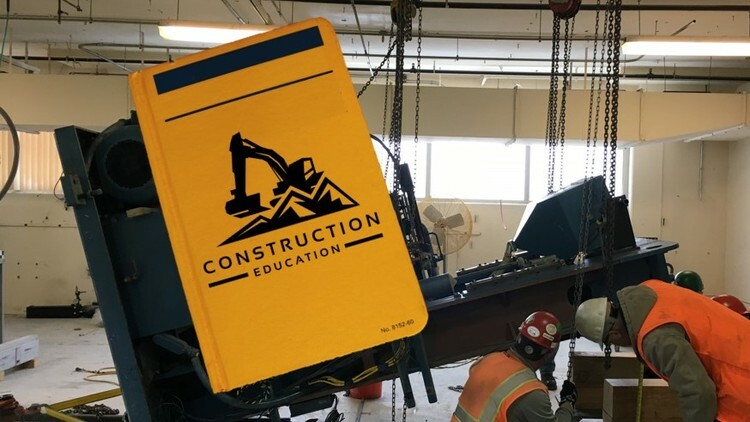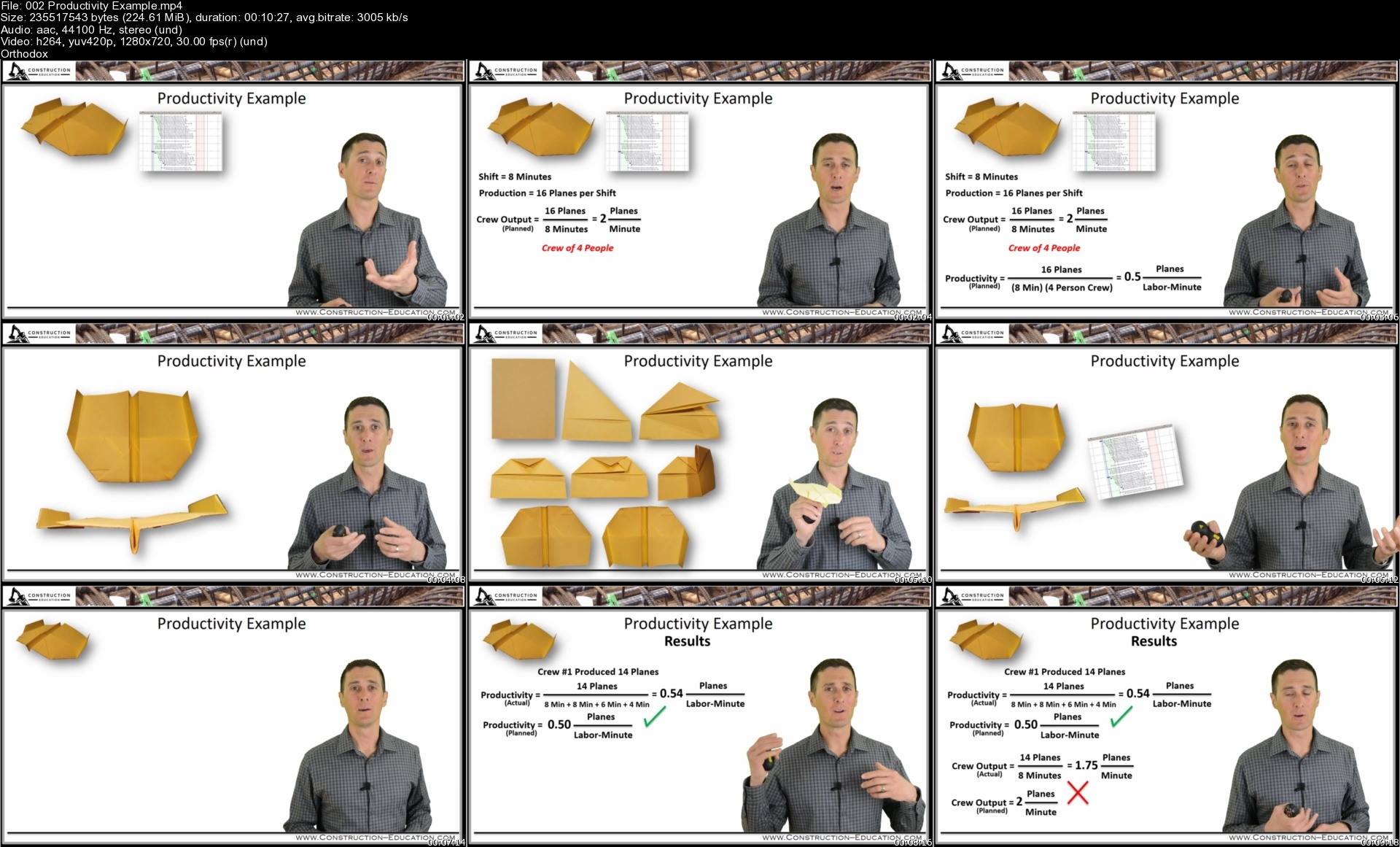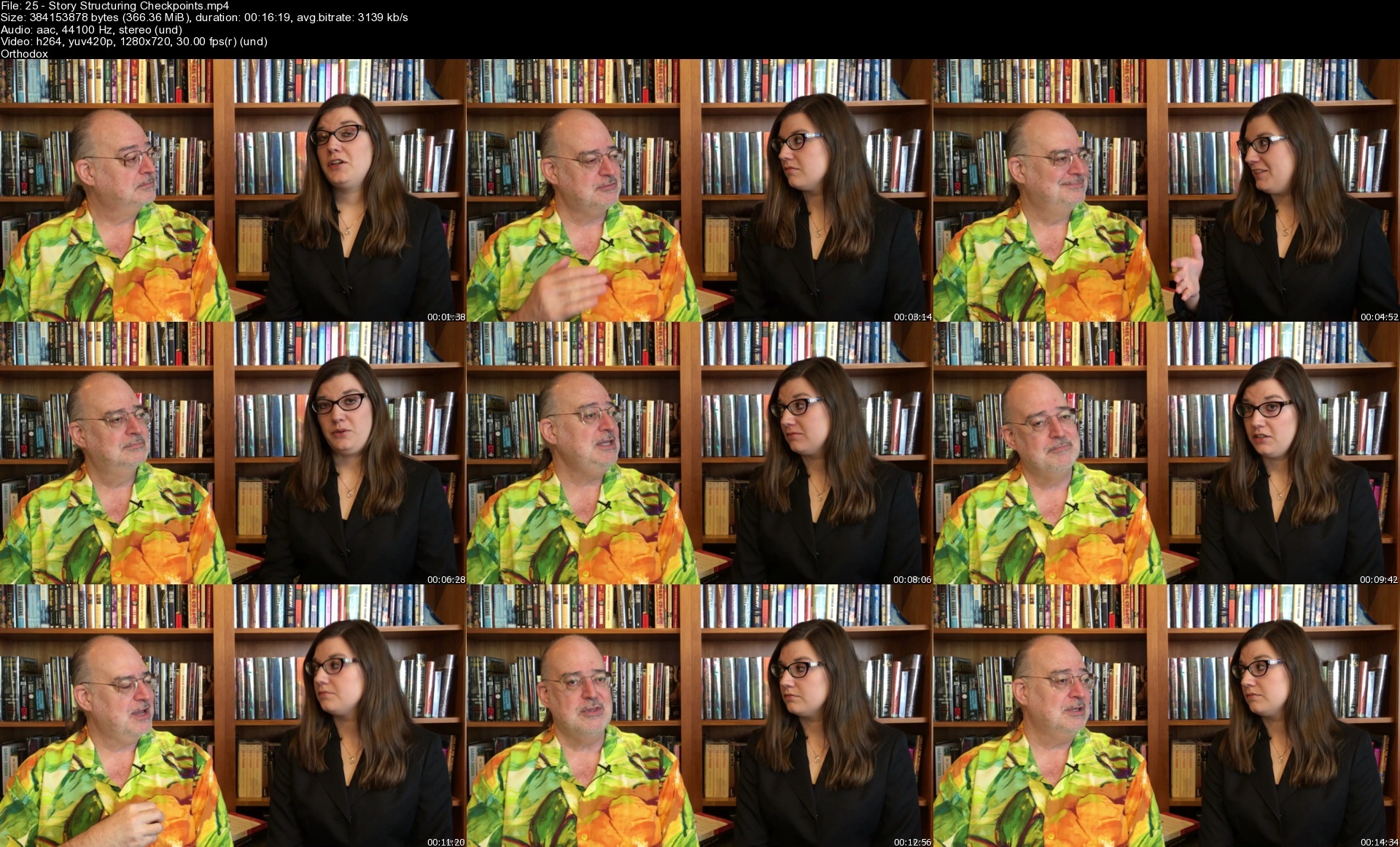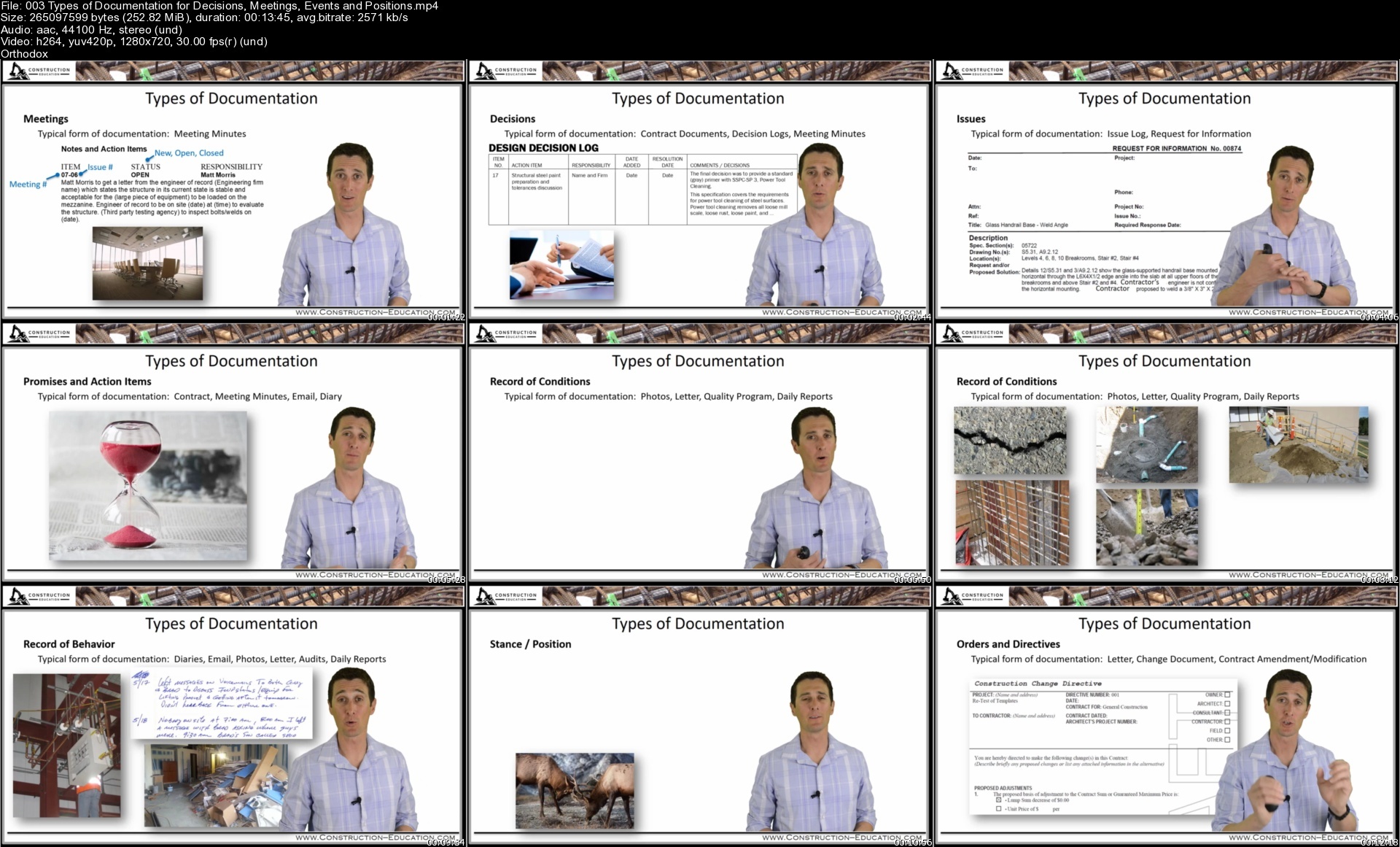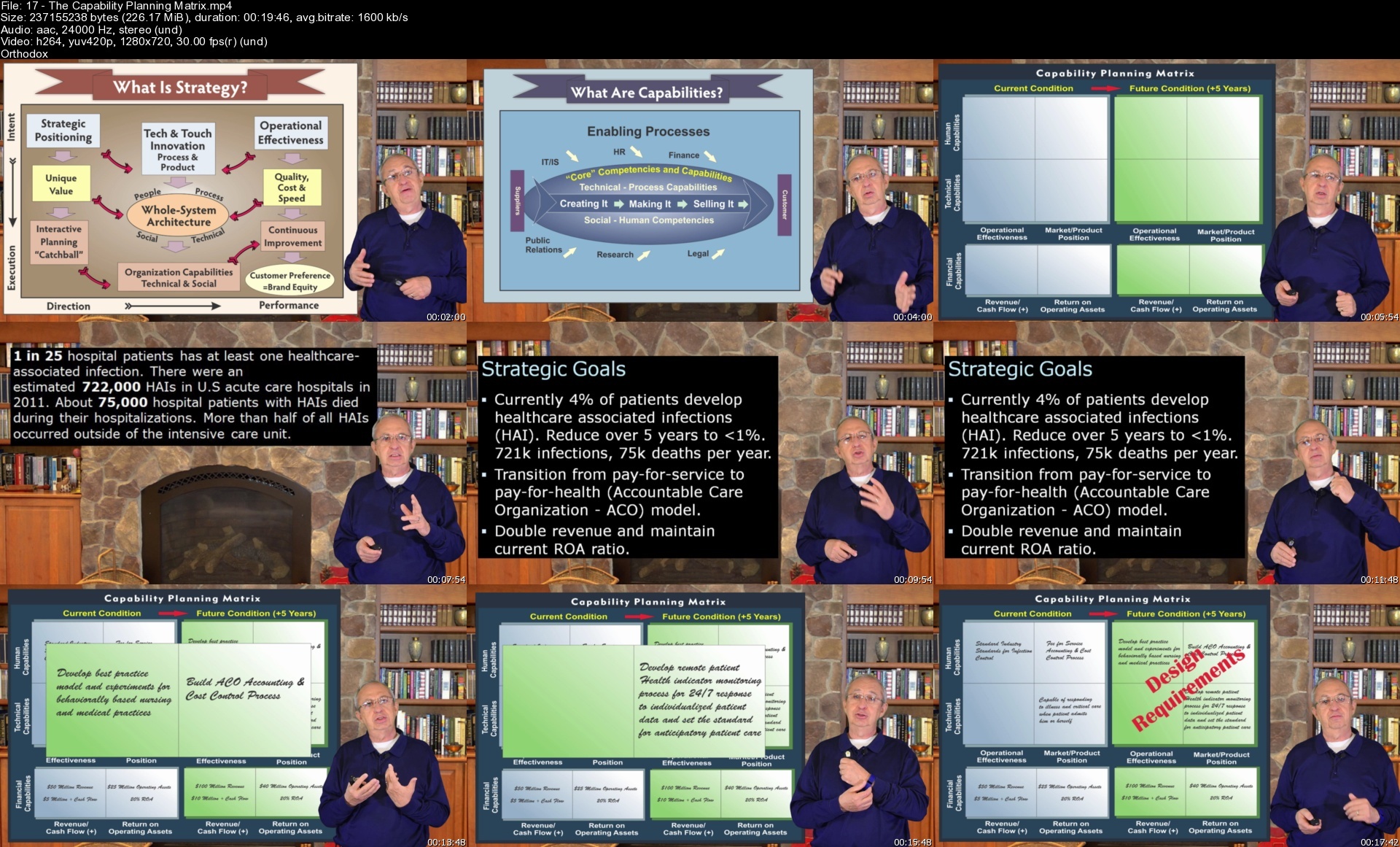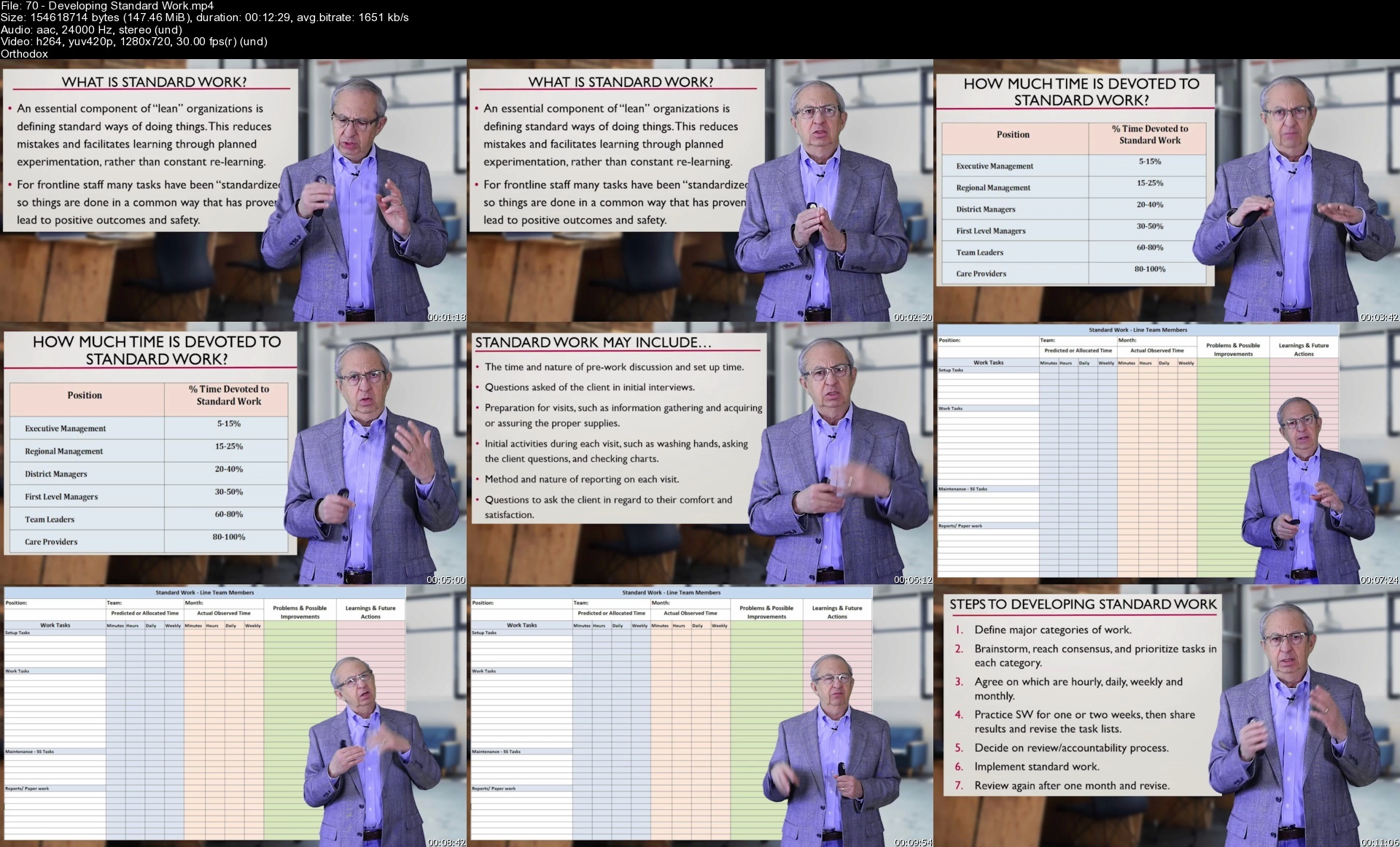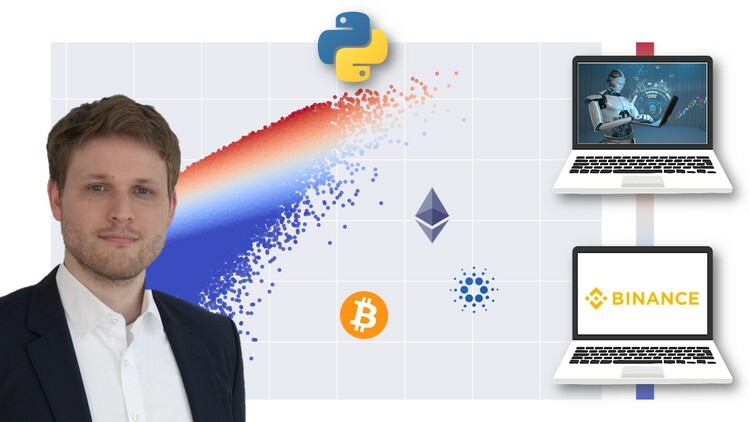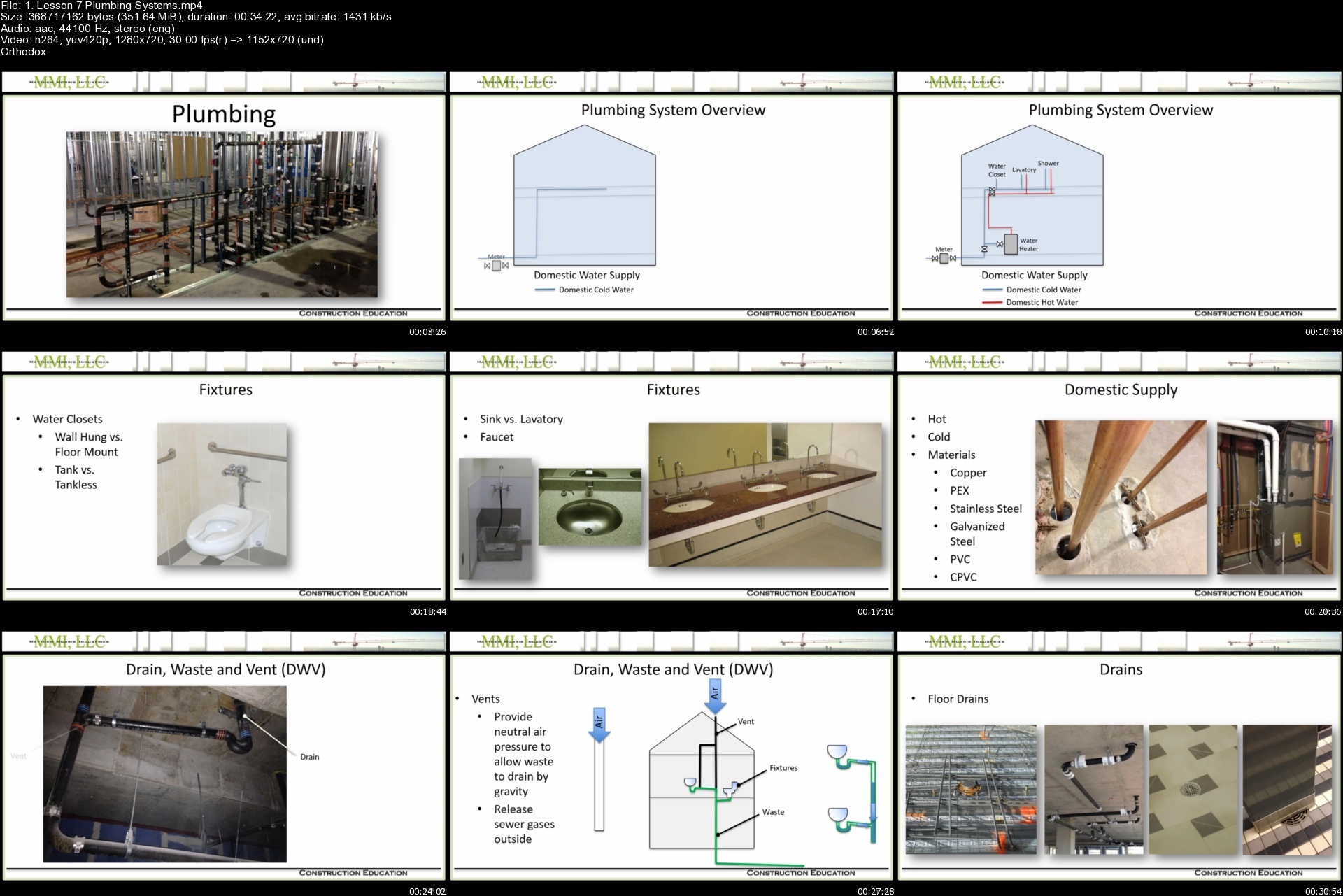
Create A Long-Term Successful Software Company
Last updated 1/2020
MP4 | Video: h264, 1280x720 | Audio: AAC, 44.1 KHz
Language: English | Size: 15.89 GB | Duration: 16h 12m
How to start a business as a software company from scratch and make it successful in the long term
What you'll learn
How to create a software company from scratch
How to launch a software startup
How to start a SaaS startup company
Requirements
Know how to use PC and MAC
Description
In this course the students will learn how to launch a business in the software industry and make it successful in the long term.You do not need to have technical skills or knowledge to launch company.In this course the following topics are presented and discussed:What to know before starting a software companyHow to setup a successful Software Business How to create a software company Startup tips Marketing strategies Skills needed to create a software company Which are the Types of softwareWhat are Generic Software ProductsWhat are Custom Software ProductsPrinciples of Project Management for Software projectsSoftware product definitionWhat is Software Architecture and how to put it into practiceWhat is Cloud Computing and why it is a technological field crucial for the success of a software businessWhich are the emerging cloud technologies and servicesCloud Services e.g. Software as a Service (SaaS)How to Build Your Own SaaS PlatformProduct development strategiesPrinciples of Software programmingGeneral Programming GuidelinesProduct Solution typesThe secret to success: LeverageTools for a StartUpGo to the next level: make your business sustainable in the long termEverything is explained in video lectures and annexed reports with practical examples and case studies
Overview
Section 1: What to know before starting a software company
Lecture 1 Introduction
Lecture 2 Why should you decide for a software company
Lecture 3 Determine what to create software for
Section 2: Setup a successful Software Business
Lecture 4 The secret to Startup Success (I)
Lecture 5 The secret to Startup Success (II)
Lecture 6 The Successful Startup Entrepreneurs Must Have
Lecture 7 Must Have Tools for the Startup Process
Lecture 8 The process to Successfully Launch a Business
Lecture 9 How to Establish the Right Business Model
Lecture 10 Prepare your company to adapt to changes
Section 3: Creating a software company
Lecture 11 A long term project
Lecture 12 Do your business Analysis
Lecture 13 Survey your audience
Lecture 14 Learn how to hire people
Lecture 15 Effective growth strategy
Section 4: Startup tips
Lecture 16 Market Analysis
Lecture 17 How to choose the way to sell your software
Lecture 18 How to make sure you will have the software your customers need
Lecture 19 Step-by-step setup guide
Lecture 20 How to hire the right resources
Section 5: Marketing strategies
Lecture 21 Marketing strategy for a Startup
Lecture 22 Customer acquisition: Paid Media Marketing
Lecture 23 Customer acquisition: Earned Media Marketing
Lecture 24 Customer acquisition: Own Media Marketing
Lecture 25 Business Models to Consider for a Startup
Lecture 26 How to Raise Prices Without Losing Customers
Section 6: Skills needed to create a software company
Lecture 27 Creating a software company having only an idea as asset
Lecture 28 How to Start a Software Company without technical skills
Lecture 29 The process to build a software company
Lecture 30 Skills needed to create a software company
Section 7: Types of software - Overview
Lecture 31 Products vs services
Lecture 32 Software categories
Lecture 33 Types of software (I)
Lecture 34 Types of software (II)
Lecture 35 Types of Applications
Lecture 36 Application vs Service
Lecture 37 Technology platforms
Lecture 38 Types of Software Products Developed by The Most Popular Software Companies
Section 8: Types of products - Generic Software Products
Lecture 39 Introduction
Lecture 40 Custom software development vs. Generic software development
Section 9: Types of products - Custom Software Products
Lecture 41 Why Custom Software?
Lecture 42 Definition of custom software
Lecture 43 Example of custom software: Case Study
Lecture 44 How to show the value of a custom software solution
Lecture 45 Advantages and disadvantages of a custom software
Section 10: Project Management for Software projects
Lecture 46 What is project management?
Lecture 47 Why project management is the most important and crucial skill for a sw company
Lecture 48 Software Development LifeCycle (SDLC)
Lecture 49 The Waterfall Model
Lecture 50 Importance of a project plan
Lecture 51 How to reduce risks in a project
Lecture 52 Stages of Project Management
Lecture 53 Agile project management
Lecture 54 Example of project using MS Project
Lecture 55 Incident Management and Agile Project Management Tools: Atlassian JIRA and other
Lecture 56 Tools for version control: Git and Github
Section 11: Software product definition
Lecture 57 Requirement gathering
Lecture 58 The importance of good requirements specifications
Lecture 59 Technical requirements
Lecture 60 User story
Lecture 61 Acceptance criteria (definition of done)
Section 12: Software Architecture
Lecture 62 Introduction
Lecture 63 Software Architecture in Web Design
Lecture 64 Basic concepts of software architecture
Lecture 65 High Level Design
Lecture 66 Principles of UML
Lecture 67 Definition of use case
Lecture 68 Low Level Design (I)
Lecture 69 Low Level Design (II)
Lecture 70 Low level design - detailed process descriptions
Lecture 71 Wireframes and prototypes
Lecture 72 Design for different types of software products
Section 13: Cloud Computing
Lecture 73 What is cloud computing
Lecture 74 Cloud computing deployment models
Lecture 75 Cloud computing characteristics and benefits
Lecture 76 Types of cloud computing services
Lecture 77 Cloud computing security
Lecture 78 Examples of cloud computing
Section 14: Emerging cloud technologies and services
Lecture 79 Introduction
Lecture 80 Platform as a Service (PaaS)
Lecture 81 Infrastructure as a Service (IaaS)
Lecture 82 The Best Infrastructure-as-a-Service Solutions
Lecture 83 Application Service Provider (ASP)
Lecture 84 Popular Cloud Services
Section 15: Cloud Services - Software as a Service (SaaS)
Lecture 85 What is SaaS
Lecture 86 How to Deploy SaaS
Lecture 87 Advantages of SaaS
Lecture 88 Disadvantages of SaaS
Lecture 89 SaaS Architecture
Section 16: How to Build Your Own SaaS Platform
Lecture 90 Introduction
Lecture 91 Identify your product idea
Lecture 92 Determine your pricing model
Lecture 93 Document your requirements
Lecture 94 Choose the technology
Lecture 95 Identify the needed skills and project team
Lecture 96 Create your product
Lecture 97 Deploy your product
Lecture 98 The secrets to create a profitable SaaS easily and fast (Part IA)
Lecture 99 The secrets to create a profitable SaaS easily and fast (Part IB)
Lecture 100 The secrets to create a profitable SaaS easily and fast (Part II)
Lecture 101 Challanges in a SaaS Startup
Section 17: Product development strategies
Lecture 102 Overview
Lecture 103 Characteristics of Software Engineering
Lecture 104 Fundamentals of Software Engineering Principles
Lecture 105 Basic Principles of Software Engineering
Lecture 106 Create a new product - General
Lecture 107 Create a new product - Case study #1
Lecture 108 Create a new product - Case study #2
Lecture 109 Create a new product - Case study #3
Lecture 110 Provide an improved solution
Lecture 111 Provide an integration or extension
Lecture 112 Blueprint product and customizations
Lecture 113 Provide a service
Lecture 114 Middleware and web services
Lecture 115 Small product ideas (wp plugins, VBA.)
Lecture 116 Perform Continuous Validation
Section 18: Software programming
Lecture 117 Software Programming Steps
Lecture 118 Programming Languages (I)
Lecture 119 Programming Languages (II)
Lecture 120 How to choose the right programming language for your product
Lecture 121 How to choose the right programming language by type
Lecture 122 Various ways to identify the right programming language to use
Lecture 123 How to choose the right programming language for a sector
Lecture 124 Basic programming principles
Lecture 125 Principles of Object-Oriented Programming
Lecture 126 Modern Programming Practices (MPP)
Lecture 127 Online resources for developers (stake Overflow,.)
Section 19: General Programming Guidelines
Lecture 128 Language-independent best practices
Lecture 129 Designing your software
Lecture 130 Version Control
Lecture 131 Coding Guidelines
Lecture 132 Continuous Integration
Lecture 133 Integrated Development Environment
Lecture 134 General Programming best practices
Lecture 135 General Guidelines for Programmers
Lecture 136 General Guidelines for Programmers (Guide)
Lecture 137 Example of General Software Development Standards and Guidelines
Section 20: Product Solution types
Lecture 138 CMS - what is a CSM and when to use a CSM
Lecture 139 CMS - Features
Lecture 140 CMS - Benefits
Lecture 141 CMS - Pros and Cons
Lecture 142 CMS - What Makes up a CMS?
Lecture 143 CMS - Functionalities
Lecture 144 CMS - How to Evaluate What CMS to Use
Lecture 145 CMS - Popular CMS - Introduction
Lecture 146 CMS - Popular CMS - Wordpress
Lecture 147 CMS - Popular CMS - Joomla
Lecture 148 CMS - Popular CMS - Drupal
Lecture 149 CMS - Popular CMS - Typo3
Lecture 150 CMS - Popular CMS - Bitrix24
Lecture 151 CMS - Popular CMS - Squarespace
Lecture 152 CMS - Popular CMS - Wix
Lecture 153 CMS - Popular CMS - Blogger
Lecture 154 CMS - Popular CMS: comparison
Lecture 155 CMS - eCommerce CMS
Lecture 156 CMS - Costs of CMS
Lecture 157 CMS - Why should you use standard CMSs?
Lecture 158 CMS - What Kinds of Websites Can You Build with a CMS?
Lecture 159 Desktop Apps
Lecture 160 Mobile Apps
Lecture 161 Mobile Apps Building Platforms (I)
Lecture 162 Mobile Apps Building Platforms (II)
Lecture 163 Mobile Apps Building Platforms (III)
Lecture 164 How to develop and launch a mobile app
Lecture 165 Tools for Mobile Designers (General)
Lecture 166 Tools for Mobile Designers (I)
Lecture 167 Tools for Mobile Designers (II)
Lecture 168 Tools for Mobile Designers (III)
Lecture 169 Tools for Mobile Designers (IV)
Lecture 170 Android vs. iOS - comparison of the platforms
Lecture 171 Web Applications
Lecture 172 Web sites
Section 21: The secret to success: Leverage
Lecture 173 Outsourcing
Lecture 174 Partnerships
Lecture 175 Types of partnerships
Lecture 176 Benefits of a partnership
Lecture 177 How to manage an effective partnership
Lecture 178 Steps to choose a partner
Lecture 179 The process to setup a successful partnership
Lecture 180 Outtasking
Lecture 181 Networking
Section 22: Tools for a StartUp
Lecture 182 Naming and Idea Generation tools
Lecture 183 Design tools
Lecture 184 Market Search tools
Lecture 185 Wireframing and Prototyping tools
Lecture 186 Development tools
Lecture 187 Testing tools
Lecture 188 Project Management tools
Lecture 189 Marketing tools
Lecture 190 Communication and collaboration tools
Lecture 191 SEO tools
Lecture 192 Social Media tools
Lecture 193 Productivity tools
Lecture 194 Presentation tools
Lecture 195 Data visualization tools
Lecture 196 Accounting and HR tools
Lecture 197 Customer Support tools
Lecture 198 Investor connection tools
Lecture 199 Office tools
Lecture 200 Launch tools
Lecture 201 CRM tools
Lecture 202 Directories of tools for StartUps
Section 23: Go to the next level
Lecture 203 What to consider when scaling your business
Lecture 204 How how to attract Top Talent from Big Businesses
Lecture 205 Critical questions a Business Plan should answer
Lecture 206 To-Have Habits for a successful Business
Lecture 207 How to transform your business model when it is time to change
Anyone who wants to launch a software business also without software or technical skills
Homepage
Code:
https://anonymz.com/?https://www.udemy.com/course/create-a-long-term-successful-software-company/
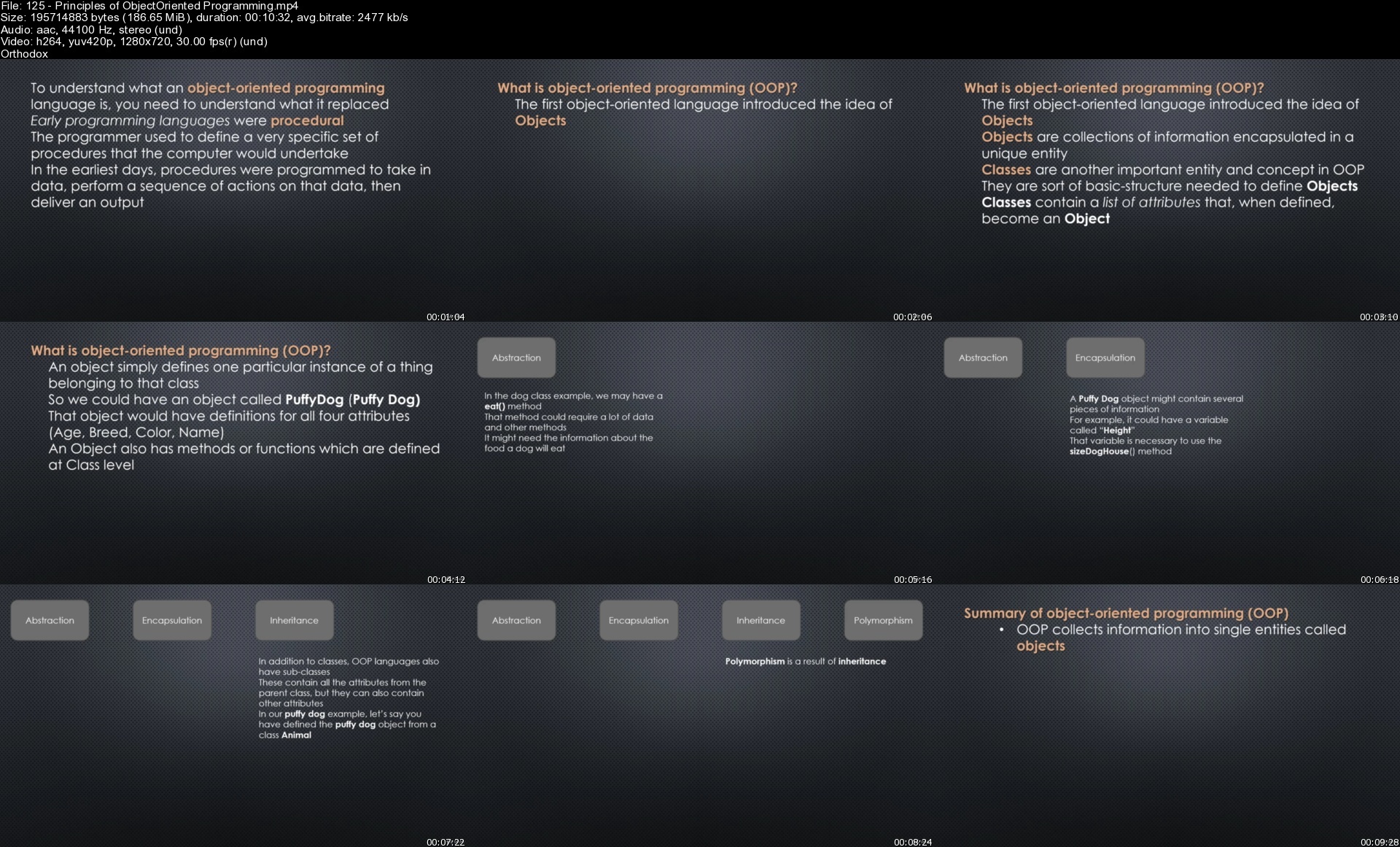
Code:
https://k2s.cc/file/2c3800f614922/Create_a_longterm_successful_Software_Company.part1.rar
https://k2s.cc/file/af044b6e06e38/Create_a_longterm_successful_Software_Company.part2.rar
https://k2s.cc/file/a73f2d1fc56cd/Create_a_longterm_successful_Software_Company.part3.rar
https://k2s.cc/file/bc32c381d9ed2/Create_a_longterm_successful_Software_Company.part4.rar
Code:
https://nitroflare.com/view/F52E90C06F64183/Create_a_longterm_successful_Software_Company.part1.rar
https://nitroflare.com/view/130FBDDE2CF5D36/Create_a_longterm_successful_Software_Company.part2.rar
https://nitroflare.com/view/043C27C571A14A6/Create_a_longterm_successful_Software_Company.part3.rar
https://nitroflare.com/view/E38542DBA06F7CA/Create_a_longterm_successful_Software_Company.part4.rar
Code:
https://rapidgator.net/file/c744e5bb1371791c7f757cb5bafbde08/Create_a_longterm_successful_Software_Company.part1.rar.html
https://rapidgator.net/file/62325fce6a75e79dc6ca4feb28046176/Create_a_longterm_successful_Software_Company.part2.rar.html
https://rapidgator.net/file/b56129d50c6d6ca23a8071d1ba9c579c/Create_a_longterm_successful_Software_Company.part3.rar.html
https://rapidgator.net/file/3ddbed8be2255282634fe95ea6013640/Create_a_longterm_successful_Software_Company.part4.rar.html

 Our Live Cams
Our Live Cams



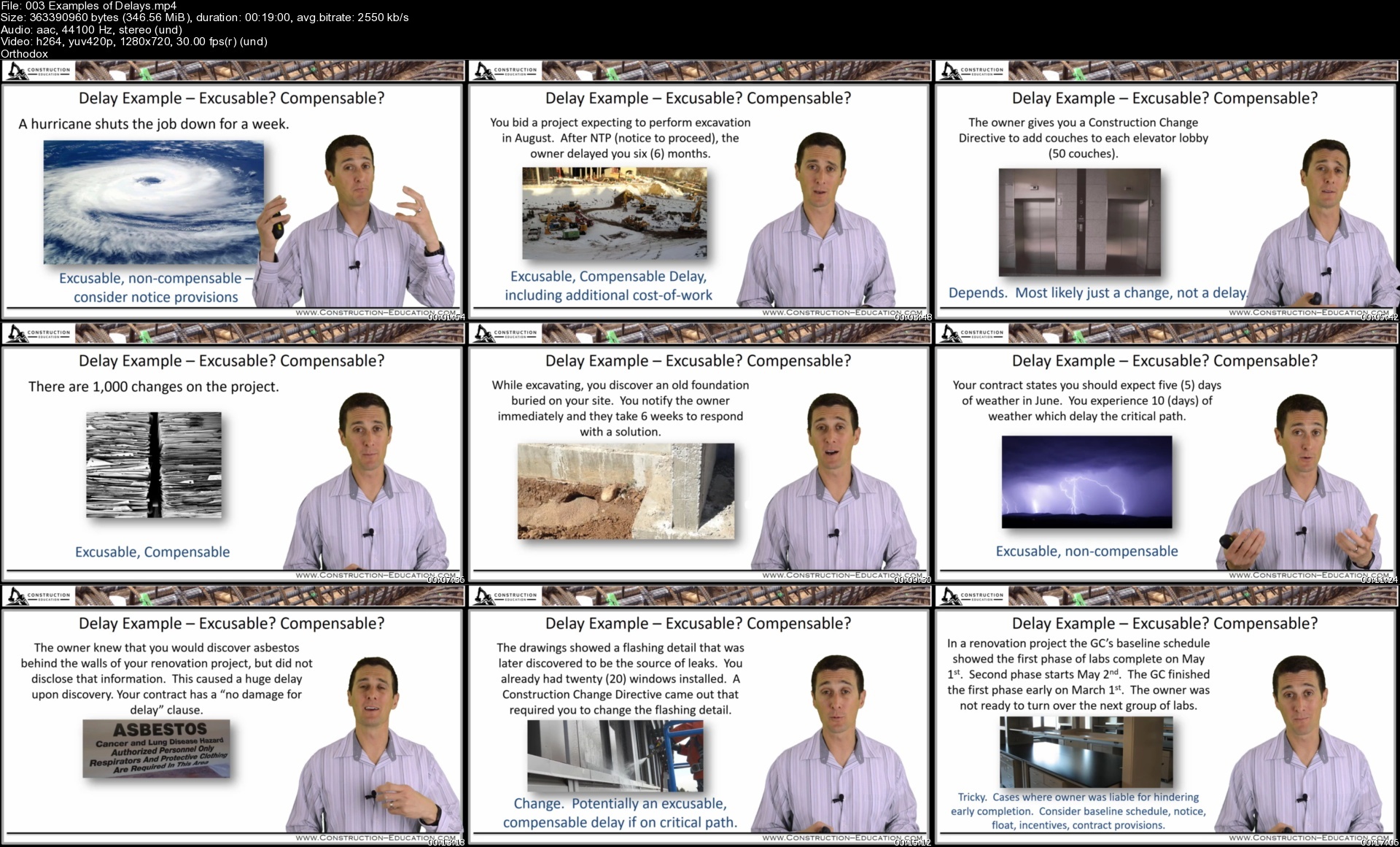

 Reply With Quote
Reply With Quote